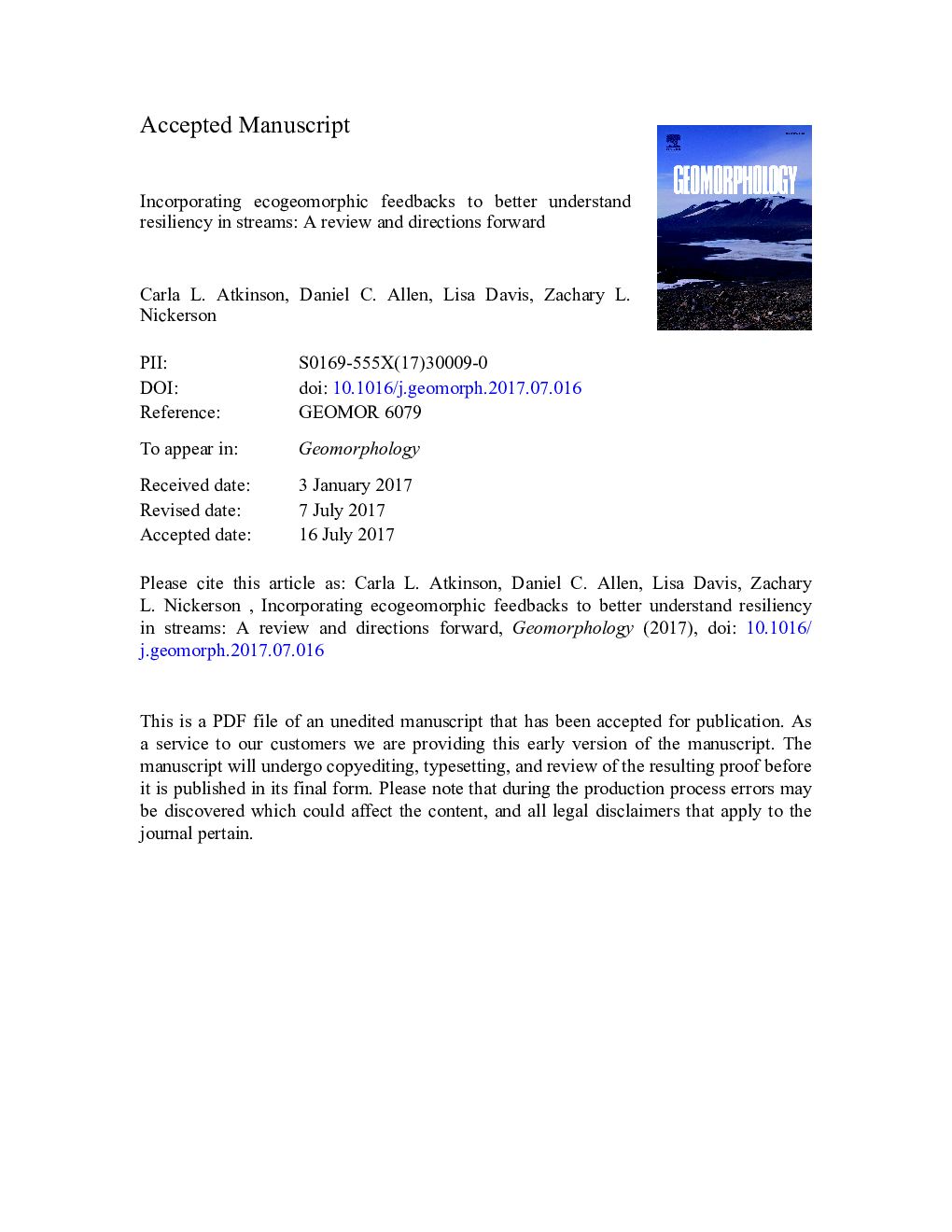| کد مقاله | کد نشریه | سال انتشار | مقاله انگلیسی | نسخه تمام متن |
|---|---|---|---|---|
| 8908161 | 1635345 | 2018 | 57 صفحه PDF | دانلود رایگان |
عنوان انگلیسی مقاله ISI
Incorporating ecogeomorphic feedbacks to better understand resiliency in streams: A review and directions forward
دانلود مقاله + سفارش ترجمه
دانلود مقاله ISI انگلیسی
رایگان برای ایرانیان
کلمات کلیدی
موضوعات مرتبط
مهندسی و علوم پایه
علوم زمین و سیارات
فرآیندهای سطح زمین
پیش نمایش صفحه اول مقاله

چکیده انگلیسی
Decades of interdisciplinary research show river form and function depends on interactions between the living and nonliving world, but a dominant paradigm underlying ecogeomorphic work consists of a top-down, unidirectional approach with abiotic forces driving biotic systems. Stream form and location within the stream network does dictate the habitat and resources available for organisms and overall community structure. Yet this traditional hierarchal framework on its own is inadequate in communicating information regarding the influence of biological systems on fluvial geomorphology that lead to changes in channel morphology, sediment cycling, and system-scale functions (e.g., sediment yield, biogeochemical nutrient cycling). Substantial evidence that organisms influence fluvial geomorphology exists, specifically the ability of aquatic vegetation and lotic animals to modify flow velocities and sediment deposition and transport - thus challenging the traditional hierarchal framework. Researchers recognize the need for ecogeomorphic frameworks that conceptualize feedbacks between organisms, sediment transport, and geomorphic structure. Furthermore, vital ecosystem processes, such as biogeochemical nutrient cycling represent the conversations that are occurring between geomorphological and biological systems. Here we review and synthesize selected case studies highlighting the role organisms play in moderating geomorphic processes and likely interact with these processes to have an impact on an essential ecosystem process, biogeochemical nutrient recycling. We explore whether biophysical interactions can provide information essential to improving predictions of system-scale river functions, specifically sediment transport and biogeochemical cycling, and discuss tools used to study these interactions. We suggest that current conceptual frameworks should acknowledge that hydrologic, geomorphologic, and ecologic processes operate on different temporal scales, generating bidirectional feedback loops over space and time. Hydro- and geomorphologic processes, operating episodically during bankfull conditions, influence ecological processes (e.g., biogeochemical cycling) occurring over longer time periods during base-flow conditions. This ecological activity generates the antecedent conditions that influence the hydro- and geomorphologic processes occurring during the next high flow event, creating a bidirectional feedback. This feedback should enhance the resiliency of fluvial landforms and ecosystem processes, allowing physical and biological processes to pull and push against each other over time.
ناشر
Database: Elsevier - ScienceDirect (ساینس دایرکت)
Journal: Geomorphology - Volume 305, 15 March 2018, Pages 123-140
Journal: Geomorphology - Volume 305, 15 March 2018, Pages 123-140
نویسندگان
Carla L. Atkinson, Daniel C. Allen, Lisa Davis, Zachary L. Nickerson,